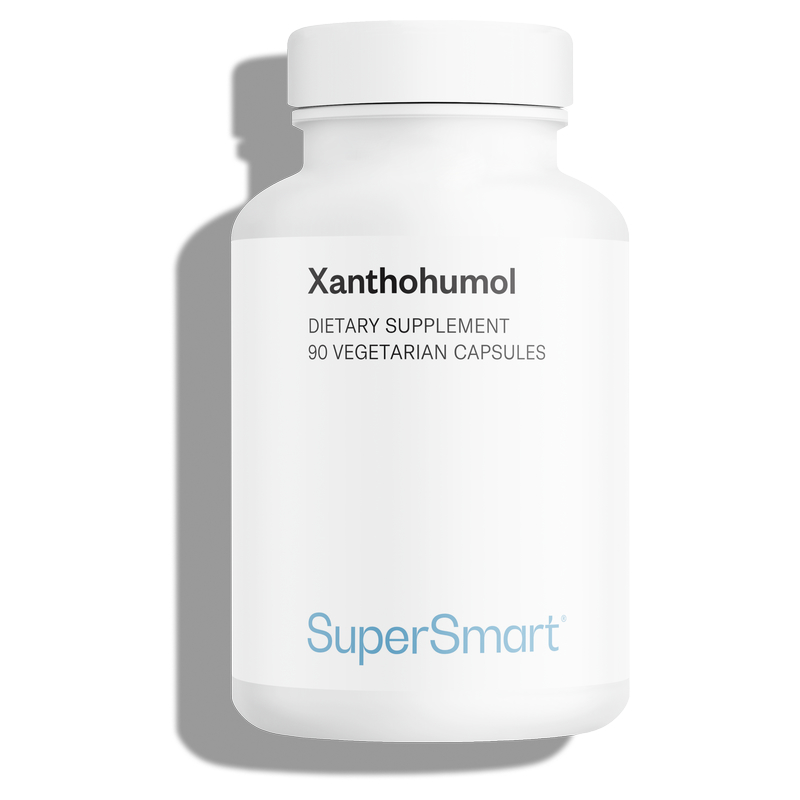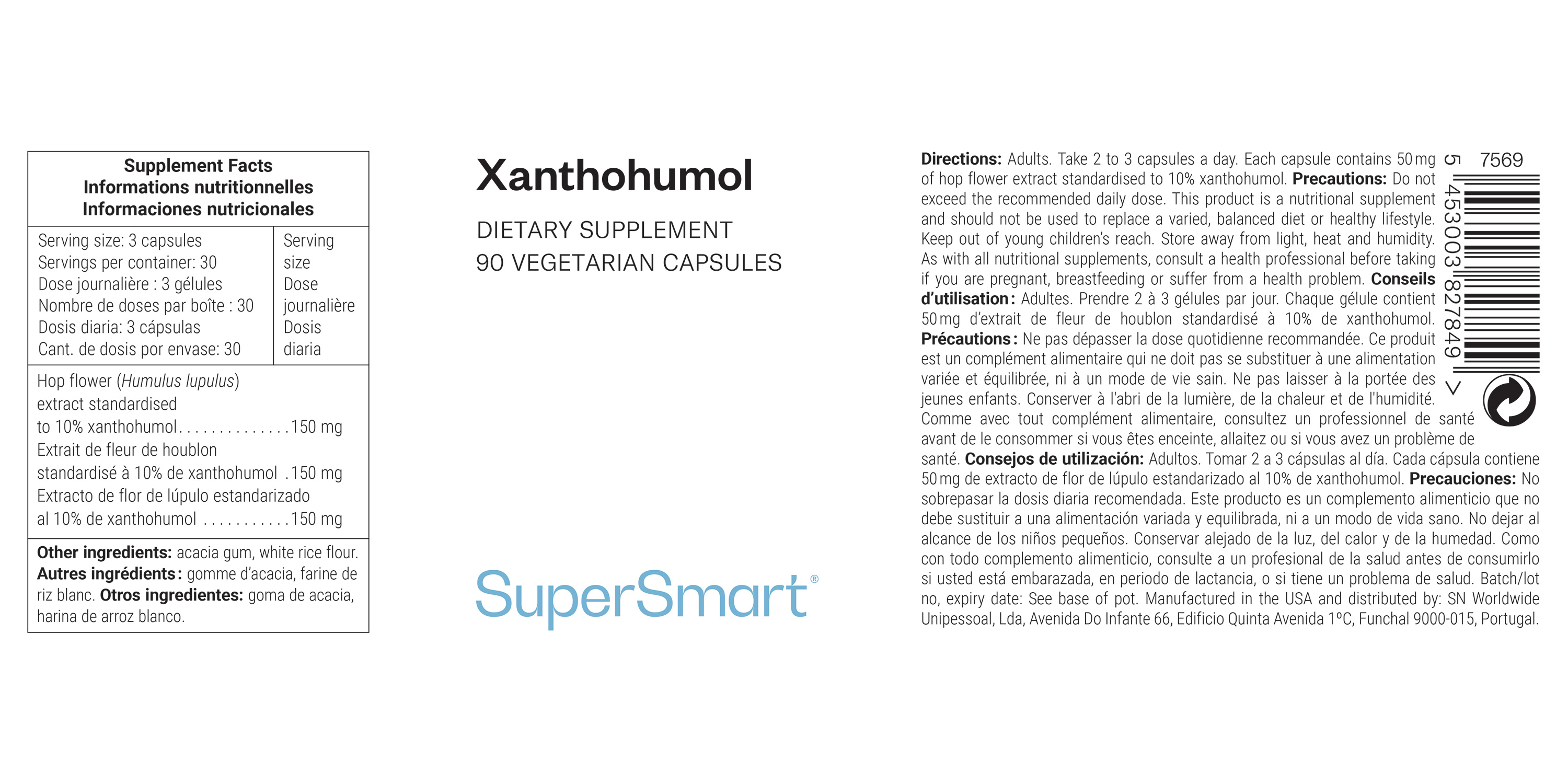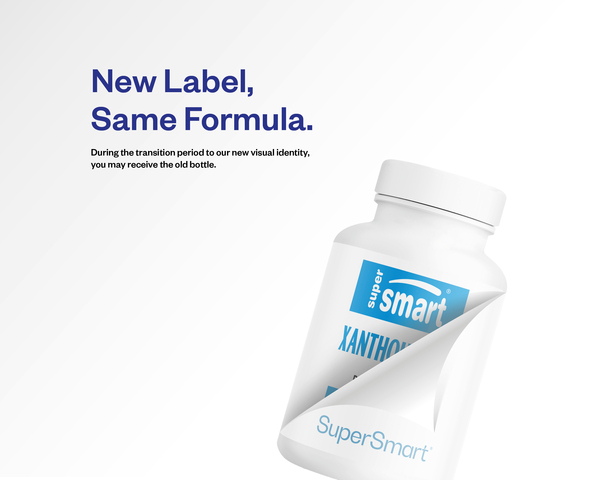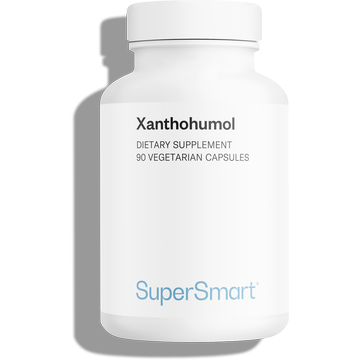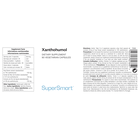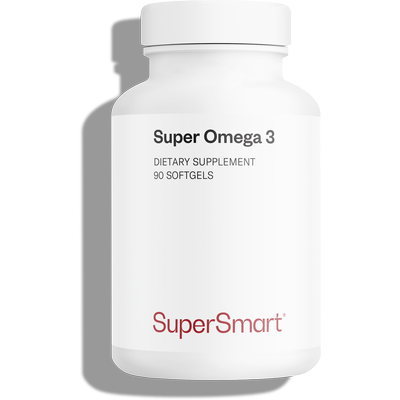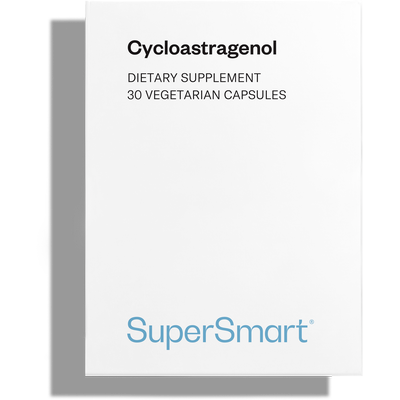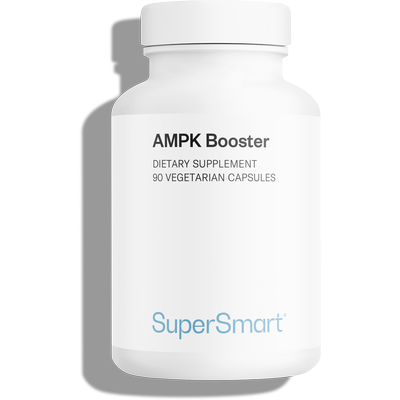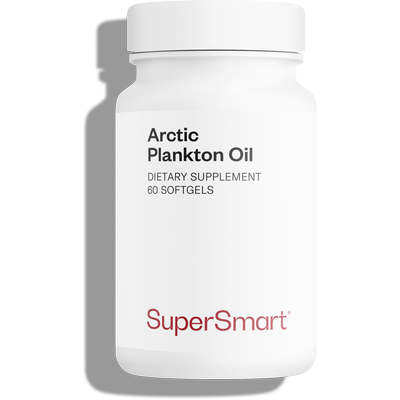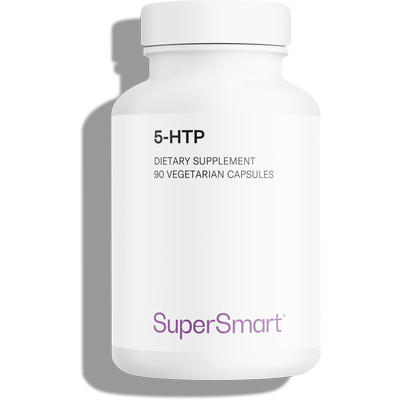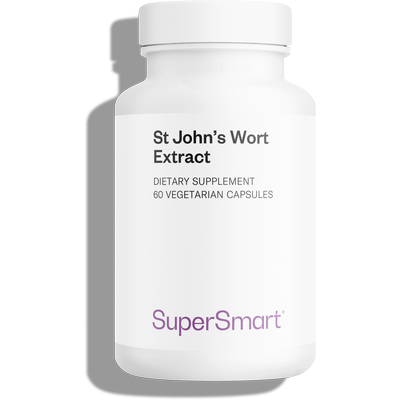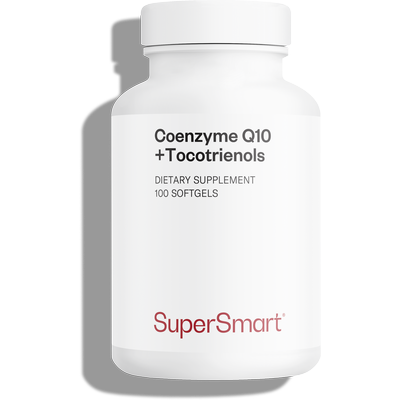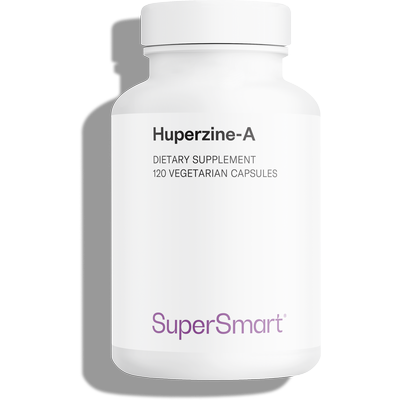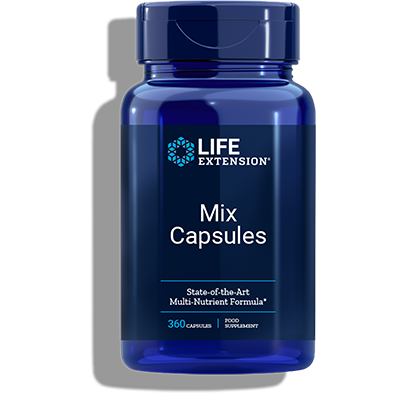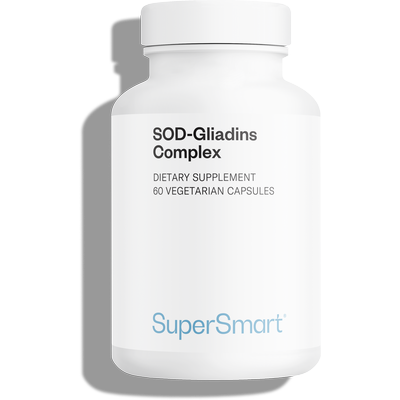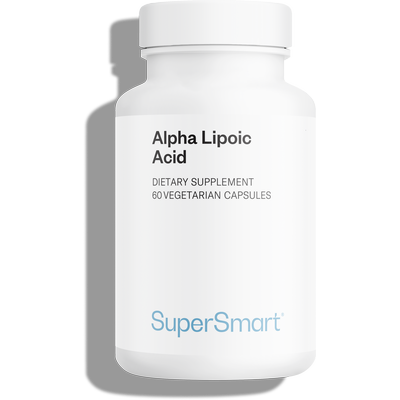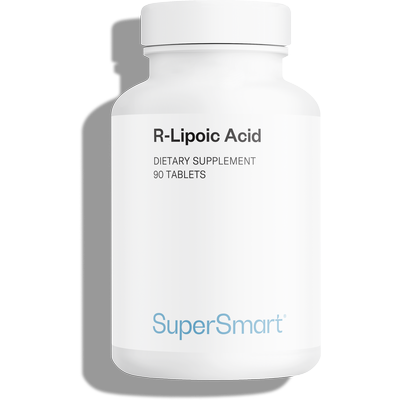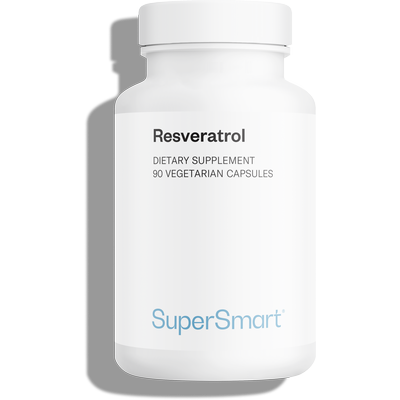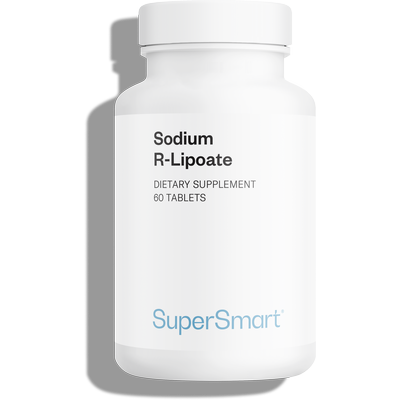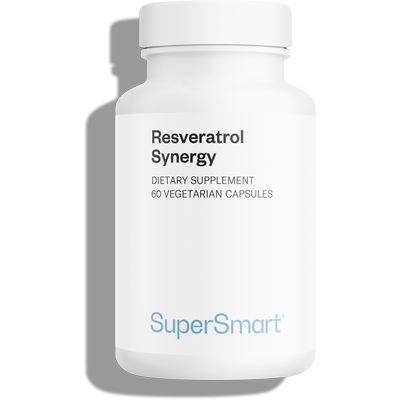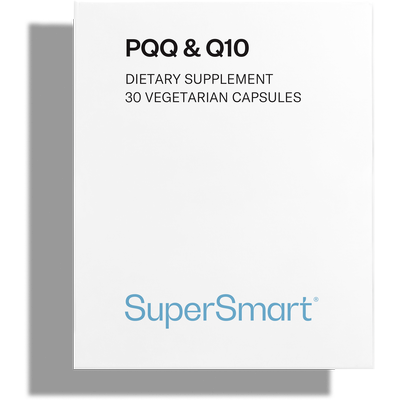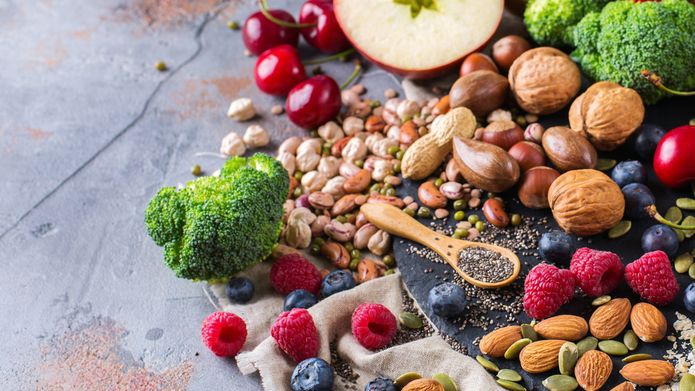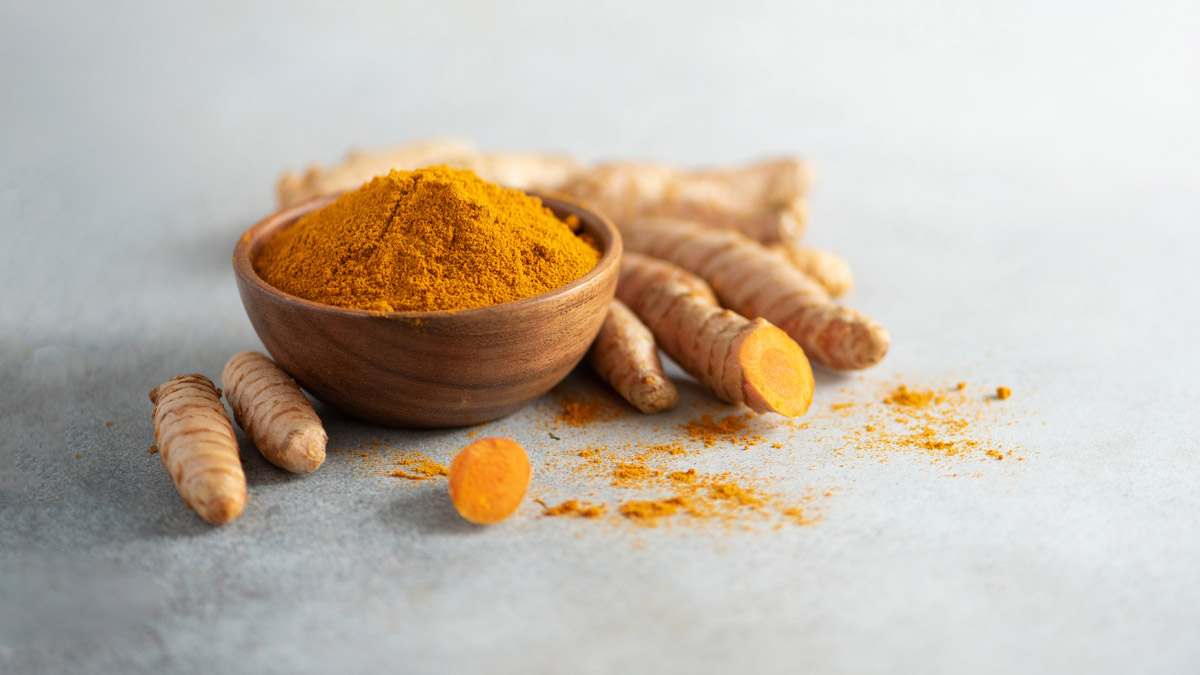Complete your selection
Xanthohumol is a hop flower supplement containing an exceptional antioxidant flavonoid called xanthohumol. It’s a phenolic compound that’s 200 times more powerful than the resveratrol in red wine, and offers truly exceptional, cell-boosting properties. Beer is the only dietary source of xanthohumol though the levels it contains are very low.
Xanthohumol, the antioxidant in beer that has superseded resveratrol in red wine
Wine-lovers appreciate the drink’s subtlety and sophistication but they also know it’s an exceptionally rich source of antioxidants. Indeed one such antioxidant is the most widely-studied anti-ageing substance ever: resveratrol. However, new research shows that beer is more than a match for its great rival. Beer is the only dietary source of xanthohumol, a natural cytoprotective antioxidant that’s 200 times more powerful than the resveratrol in red wine!
It was Hildegarde de Bingen, a 12th-century Benedictine nun and pharmacologist, who was responsible for introducing hops into beer. Before that, monks had used mainly coriander, gentian or sage to flavour and preserve their precious nectar, which was given to pilgrims in monasteries and abbeys. It was immediately evident that the hop offered many benefits: with its preservative properties and positive effects, it quickly became an essential ingredient in the recipe. Over the centuries that followed, it would go on to be used by generations of brewers, right up to the present day. Though the monks had no way of knowing it, its meteoric rise was due to the hop’s high content in phenolic compounds – particularly xanthohumol. The problem is that these compounds, which come from the hop flower, are very delicate and tend to make the beer a bit cloudy. The majority of modern, large-scale beer producers therefore use a chemical (pVPP) to eliminate this cloudiness and prevent deposits from forming in the bottle. So in order to obtain the benefits of xanthohumol, you need to drink artisanal beers with a strong hop content if possible (IPA, for example).
But the best way of benefiting from this cytoprotective compound (which we’ll undoubtedly be hearing more about in the future) is to take a hop flower supplement, standardised in xanthohumol, every day. It’s an ultra-modern solution (extracting the xanthohumol from the hop inflorescences is a major technological achievement) which draws on its ancient tradition of use and which avoids the oxidative effects of alcohol.
What benefits are offered by the supplement Xanthohumol?
Hop flower extract standardised in xanthohumol offers four main benefits, all of which are backed up by the scientific literature:
- It supports optimal cellular health and combats oxidative stress. Xanthohumol and the phenolic compounds present in hop cones are the most effective natural antioxidants in the plant kingdom. In 2014, Professor Wang and his team showed that at the same concentration, they had greater antioxidant activity than the antioxidants in green tea. A number of studies have also demonstrated the broad-spectrum chemo preventive properties of xanthohumol on cells (1-3): induction of detoxification enzymes, inhibition of angiogenesis and inflammatory signals, cytoprotective effects, induction of apoptosis, inhibition of free radicals and procarcinogens … (4).
- It helps lower blood cholesterol levels. In 2017, scientists discovered that xanthohumol promotes HDL cholesterol in the blood, helping to clear arteries and tissues of oxidised cholesterol and direct it towards the liver where it is broken down (5). In addition, the other natural compounds that give hop its characteristics disrupt the molecular mechanisms responsible for the initiation, progression and rupture of the atherosclerotic plaques that cause stroke.
- It’s a valuable aid against sleep problems and nervous agitation. Did you know that in Belgium, where hops are widely grown, people are advised to put dried hop cones in their ears to improve their sleep? Research has indeed demonstrated that the compounds in hop produce similar effects to those of melatonin and can normalise circadian rhythms (6). Several studies have even shown a valerian and hop flower combination to be as effective for improving sleep as synthetic sleeping tablets (the famous benzodiazepines) but without causing the side-effects associated with these drugs (7).
- It reduces problems related to the menopause and pre-menopause. Hop flowers contain the most powerful phytooestrogen isolated to date: 8-Prenylnaringenin (8-11). It acts as a selective modulator of oestrogen receptors, helping to reduce discomfort associated with the menopause (12-13), such as hot flushes. In addition, xanthohumol is a powerful inhibitor of the bone resorption responsible for osteoporosis.
Other studies have demonstrated its ability to regulate fat metabolism (by improving lipid parameters) and to boost the body’s defences and vitality. By no means exhaustive, this list identifies xanthohumol as a substance of major interest in terms of protection and actively contributing to factors affecting recovery.
Where does xanthohumol come from?
Xanthohumol is extracted from the female cones of the hop plant, a climbing perennial which is added to beer to improve its taste, aroma, bitterness, frothy texture and preservation (14). It’s a chalcone-type antioxidant flavonoid, the only one of its kind, which is found solely in hop flowers. It’s therefore present in beer but in tiny amounts: due to the high temperatures used in the brewing process, it gets converted into another less powerful compound called isoxanthohumol. Some very hoppy beers (such as IPA) (15) contain more, as hops are added after brewing.
The hop has been regarded as a medicinal plant for centuries (16-17). Its use dates back to the monasteries of 8th century Europe(18), when it was used for its pharmacological properties, in particular for treating anxiety and sleep problems, for its benefits for the endocrine system and for its anti-tumour effects.
Glossary
- Cell strengthening
- Technique that increases our cells’ natural defences against aggressive agents.
- Angiogenesis
- Process whereby new blood vessels grow from existing ones.
- Apoptosis
- Physiological process of programmed cell death.
- Free radicals
- Unstable molecules that seek to bind to other atoms and cause chain reactions.
What is in Xanthohumol
Any questions?
Our team of nutrition experts and scientists has the answers.
The recommended dose is two capsules a day, to be taken with meals.
If you want to boost its effects on sleep, itâs worth knowing that hops acts synergistically with other supplements available to buy at Supersmart such as valerian (found in the natural formulation Advanced Sleep Formula). For improving hormone balance, itâs better to combine it with an extract of pumpkin seeds.
Buy Xanthohumol capsules to support cellular health.
Xanthohumolâs mechanisms of action come from its extraordinarily high content of phenolic compounds. Recent studies show that regular consumption of these compounds can, in the long term, reduce the risk of many chronic health disorders such as cardiovascular disease (19). Phenols, and in particular, xanthohumol, exert modulatory effects in cells by interacting with a wide range of molecular targets of signalling pathways (mitogen-activated protein kinase, protein kinase C, detoxifying antioxidant enzymes â¦) (20). These effects translate into increased expression of certain cytoprotective genes, regulation of the normal cell cycle, inhibition of growth, an increase in apoptosis, inhibition of angiogenesis, as well as suppression of oxidative stress, a state of imbalance which impairs the structural and functional integrity of cell membranes (21). The role played by oxidative stress in the development of chronic diseases is now widely documented in the scientific literature (22). Phenolic compounds can also influence the composition of gut microbiota and re-establish intestinal barrier function, thus modulating the chronic inflammation associated with metabolic diseases (23).
Following ingestion, phenolic compounds such as xanthohumol are absorbed, distributed to various tissues and then metabolised by the liver. A proportion undergo partial conversion by gut flora. (24).
This product’s capsules are composed of HPMC (hydroxypropyl methylcellulose), a plant substance derived from cellulose. HPMC is widely used for medicines and dietary supplements. It contains no animal ingredients, is recognised as safe by health authorities and is considered more sustainable than synthetic alternatives.
june 24 2024
With beer you never know how much xanthohumol it contains. With this product you get a sufficient amount.
march 25 2024
great (future) potential!....let's wait for 2017 TA-XAN- health claim @ EFSA... & for BIG PHARMA reaction...good luck! Hops from OREGON?
march 20 2023
I have been using this product for over a year now and it really helps with blood flow because of it's vasodialtor properties and of corse for it's very strong antioxidant properties. I'll recommend this for those who want to supplement their normal deficient diet.
march 23 2025
zorgt voor rust beter om in slaap te raken
provides calmness, better to fall asleep
 see the translation
Translated by SuperSmart - see the original
see the translation
Translated by SuperSmart - see the original
june 29 2024
Sehr gutes Produkt
Very good product
 see the translation
Translated by SuperSmart - see the original
see the translation
Translated by SuperSmart - see the original
Need help?
You may also like

